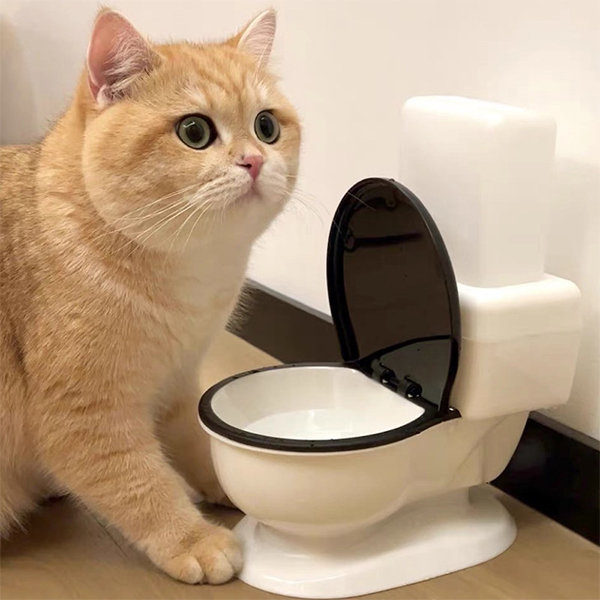Avoid Clogs and Damage: Never Flush Cat Poop Down Your Toilet - Expert Insights
Avoid Clogs and Damage: Never Flush Cat Poop Down Your Toilet - Expert Insights
Blog Article
Have you been on the lookout for information and facts on How to Dispose of Cat Poop and Litter Without Plastic Bags?

Intro
As cat owners, it's important to bear in mind how we dispose of our feline pals' waste. While it may appear hassle-free to purge cat poop down the toilet, this method can have damaging effects for both the environment and human health.
Environmental Impact
Flushing cat poop presents hazardous microorganisms and parasites into the supply of water, positioning a significant threat to marine communities. These pollutants can adversely influence aquatic life and concession water high quality.
Wellness Risks
Along with ecological issues, purging pet cat waste can also position health and wellness risks to humans. Cat feces may include Toxoplasma gondii, a bloodsucker that can create toxoplasmosis-- a potentially severe ailment, specifically for expecting females and individuals with weakened body immune systems.
Alternatives to Flushing
The good news is, there are much safer and a lot more accountable methods to get rid of pet cat poop. Take into consideration the adhering to alternatives:
1. Scoop and Dispose in Trash
The most usual approach of dealing with pet cat poop is to scoop it right into a biodegradable bag and throw it in the garbage. Make sure to use a dedicated clutter scoop and deal with the waste quickly.
2. Use Biodegradable Litter
Opt for naturally degradable pet cat litter made from materials such as corn or wheat. These litters are eco-friendly and can be safely disposed of in the garbage.
3. Bury in the Yard
If you have a backyard, consider hiding cat waste in a marked area far from vegetable yards and water sources. Be sure to dig deep adequate to prevent contamination of groundwater.
4. Mount a Pet Waste Disposal System
Purchase a pet dog waste disposal system especially created for cat waste. These systems use enzymes to break down the waste, lowering smell and environmental influence.
Verdict
Responsible animal possession expands beyond supplying food and shelter-- it likewise entails proper waste administration. By avoiding flushing feline poop down the commode and choosing alternative disposal techniques, we can reduce our ecological impact and protect human health and wellness.
Why Can’t I Flush Cat Poop?
It Spreads a Parasite
Cats are frequently infected with a parasite called toxoplasma gondii. The parasite causes an infection called toxoplasmosis. It is usually harmless to cats. The parasite only uses cat poop as a host for its eggs. Otherwise, the cat’s immune system usually keeps the infection at low enough levels to maintain its own health. But it does not stop the develop of eggs. These eggs are tiny and surprisingly tough. They may survive for a year before they begin to grow. But that’s the problem.
Our wastewater system is not designed to deal with toxoplasmosis eggs. Instead, most eggs will flush from your toilet into sewers and wastewater management plants. After the sewage is treated for many other harmful things in it, it is typically released into local rivers, lakes, or oceans. Here, the toxoplasmosis eggs can find new hosts, including starfish, crabs, otters, and many other wildlife. For many, this is a significant risk to their health. Toxoplasmosis can also end up infecting water sources that are important for agriculture, which means our deer, pigs, and sheep can get infected too.
Is There Risk to Humans?
There can be a risk to human life from flushing cat poop down the toilet. If you do so, the parasites from your cat’s poop can end up in shellfish, game animals, or livestock. If this meat is then served raw or undercooked, the people who eat it can get sick.
In fact, according to the CDC, 40 million people in the United States are infected with toxoplasma gondii. They get it from exposure to infected seafood, or from some kind of cat poop contamination, like drinking from a stream that is contaminated or touching anything that has come into contact with cat poop. That includes just cleaning a cat litter box.
Most people who get infected with these parasites will not develop any symptoms. However, for pregnant women or for those with compromised immune systems, the parasite can cause severe health problems.
How to Handle Cat Poop
The best way to handle cat poop is actually to clean the box more often. The eggs that the parasite sheds will not become active until one to five days after the cat poops. That means that if you clean daily, you’re much less likely to come into direct contact with infectious eggs.
That said, always dispose of cat poop in the garbage and not down the toilet. Wash your hands before and after you clean the litter box, and bring the bag of poop right outside to your garbage bins.
https://trenchlesssolutionsusa.com/why-cant-i-flush-cat-poop/

Do you really like more info about Don’t flush cat feces down the toilet? Try to leave a comment down below. We will be pleased to know your views about this review. We hope that you visit us again before long. Sharing is caring. Who knows, you may be helping someone out. We treasure reading our article about Don’t flush cat feces down the toilet.
Instant Quote Report this page